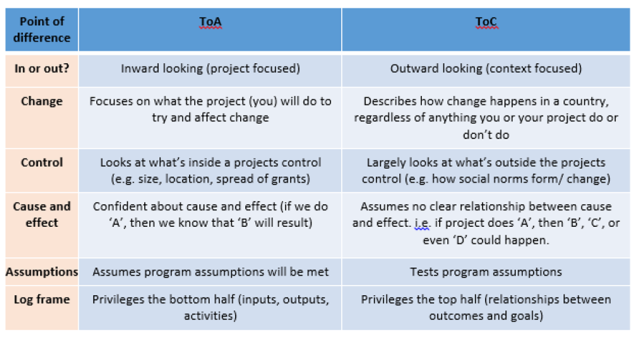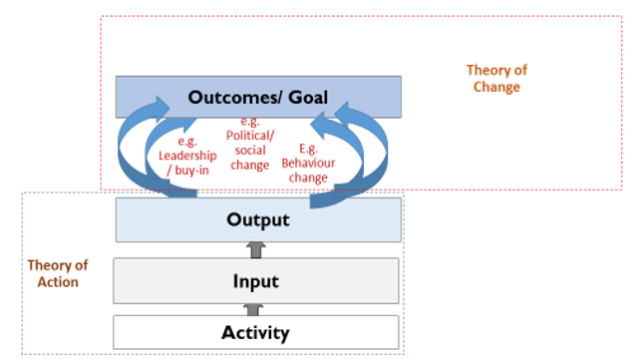I have been fortunate enough to spend much of the last three months working on the designs of several health and governance programs across PNG, South Asia, and Africa.
One thing that has struck me, regardless of which donor or country we work in, is the ongoing confusion in the aid industry regarding theories of change and theories of action. And why it is so important we get the distinction right at design.
For those out there who don’t subscribe to the development jargon (good for you): Theories of Change or Action (ToA and ToCs) are two common, but not always well understood or defined, tools used by donors and implementers when designing aid projects.
ToA/ToCs help donors and project teams understand what it is they are trying to achieve, whether it is possible for them to achieve it, and how they plan to do it. They are tools that try to make sense of complexity – so that activities, budgets and partners can be designed and ‘stuff’ can happen. Inevitably they constitute simplifications – or ‘approximations’ – of reality, but their power lies in selecting the key drivers of change.
- As Coffey point out – a ToA “describes how a project or program is designed and set up”. What mix of: (a) activities (e.g. training, technical assistance), (b) delivery modalities (e.g. a grant or budget support), (c) partners (e.g. faith based groups, INGOs) will you use to try and achieve your outputs or intended changes?
- Whereas a ToC “describes the processes through which change comes about for individuals, groups or communities”. It is an assumption (or series of assumptions) about how change will happen in a country, regardless of what a donor or project does or doesn’t do.
In a little more detail…

Importantly, ToAs are good at explaining the bottom of the log frame. Where we can be fairly certain about the relationship between cause and effect (or input and output). See diagram below. By comparison, ToCs are useful at explaining what’s happening (or what’s not happening) higher up the log frame. The point at which outputs are meant to translate into outcomes and goals – and when change is unpredictable and gets messy, complicated and is often far outside the projects control. They focus on testing assumptions and the relationship between cause and effect.

Yet despite their differences, ToAs and ToCs cannot exist without the other. There is no point selecting delivery modalities, partners or activities (ToA) without knowing how change happens and what the most likely interventions are a project can use to try and ‘nudge’ things in a certain direction. Conversely, a ToC is useless without something to give it meaning (a ToA).
Bringing it back to our health and governance program designs – this distinction is helping teams make some hard decisions about where to put resources. For example, is the most likely path to eliminating a certain disease through government systems, or by working through third parties in parallel to government? The assumptions we are making in our ToCs (about how public servants are incentivsed to perform, where the potential for collective action lies, whether procurement systems follow the rules etc) are informing these judgements. Our ToA is then guiding decisions about grants vs technical assistance, local vs international NGOs, and activity choice: depending on what we assess is the most likely pathway to change (again back to our ToC assumptions). In some countries, our ToCs are leading the program to work alongside the state. Whereas in others, to work though government systems. Or a combination of both.
We’ll report back in a year and let you know how we get on.

Pingback: Three big M&E lessons – Sustainable Development Praxis